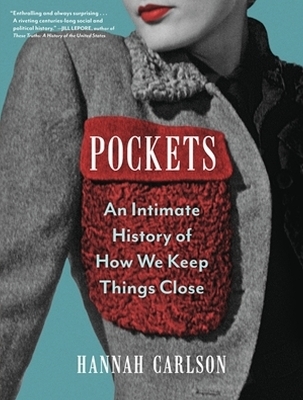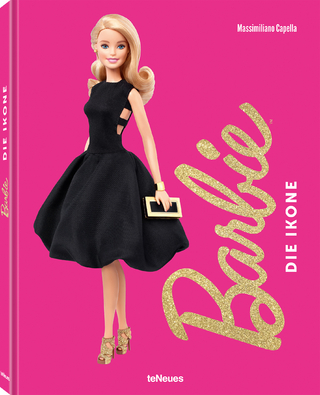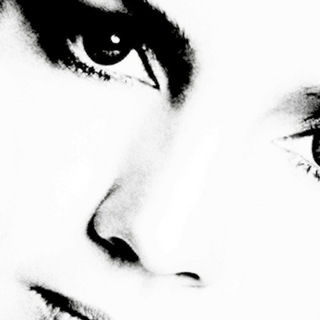
Pockets
An Intimate History of How We Keep Things Close
Seiten
2023
Algonquin Books (Verlag)
978-1-64375-154-2 (ISBN)
Algonquin Books (Verlag)
978-1-64375-154-2 (ISBN)
"Who knew the humble pocket could hold so much history? In this enthralling and always surprising account, Hannah Carlson turns the pocket inside out and out tumble pocket watches, coins, pistols, and a riveting centuries-long social and political history." ?Jill Lepore, author of These Truths: A History of the United States
Who gets pockets, and why?
It's a subject that stirs up plenty of passion: Why do men's clothes have so many pockets and women's so few? And why are the pockets on women's clothes often too small to fit phones, if they even open at all? In her captivating book, Hannah Carlson, a lecturer in dress history at the Rhode Island School of Design, reveals the issues of gender politics, security, sexuality, power, and privilege tucked inside our pockets.
Throughout the medieval era in Europe, the purse was an almost universal dress feature. But when tailors stitched the first pockets into men's trousers five hundred years ago, it ignited controversy and introduced a range of social issues that we continue to wrestle with today, from concealed pistols to gender inequality. See: #GiveMePocketsOrGiveMeDeath.
Filled with incredible images, this microhistory of the humble pocket uncovers what pockets tell us about ourselves: How is it that putting your hands in your pockets can be seen as a sign of laziness, arrogance, confidence, or perversion? Walt Whitman's author photograph, hand in pocket, for Leaves of Grass seemed like an affront to middle-class respectability. When W.E.B. Du Bois posed for a portrait, his pocketed hands signalled defiant coolness.
And what else might be hiding in the history of our pockets? (There's a reason that the contents of Abraham Lincoln's pockets are the most popular exhibit at the Library of Congress.) Thinking about the future, Carlson asks whether we will still want pockets when our clothes contain "smart" textiles that incorporate our IDs and credit cards.
Pockets is for the legions of people obsessed with pockets and their absence, and for anyone interested in how our clothes influence the way we navigate the world.
Who gets pockets, and why?
It's a subject that stirs up plenty of passion: Why do men's clothes have so many pockets and women's so few? And why are the pockets on women's clothes often too small to fit phones, if they even open at all? In her captivating book, Hannah Carlson, a lecturer in dress history at the Rhode Island School of Design, reveals the issues of gender politics, security, sexuality, power, and privilege tucked inside our pockets.
Throughout the medieval era in Europe, the purse was an almost universal dress feature. But when tailors stitched the first pockets into men's trousers five hundred years ago, it ignited controversy and introduced a range of social issues that we continue to wrestle with today, from concealed pistols to gender inequality. See: #GiveMePocketsOrGiveMeDeath.
Filled with incredible images, this microhistory of the humble pocket uncovers what pockets tell us about ourselves: How is it that putting your hands in your pockets can be seen as a sign of laziness, arrogance, confidence, or perversion? Walt Whitman's author photograph, hand in pocket, for Leaves of Grass seemed like an affront to middle-class respectability. When W.E.B. Du Bois posed for a portrait, his pocketed hands signalled defiant coolness.
And what else might be hiding in the history of our pockets? (There's a reason that the contents of Abraham Lincoln's pockets are the most popular exhibit at the Library of Congress.) Thinking about the future, Carlson asks whether we will still want pockets when our clothes contain "smart" textiles that incorporate our IDs and credit cards.
Pockets is for the legions of people obsessed with pockets and their absence, and for anyone interested in how our clothes influence the way we navigate the world.
Hannah Carlson is an authority on the history of clothing and an award-winning researcher and author. She has been featured on the podcast 99% Invisible, as well as in The Los Angeles Times, Fast Company, and The New Yorker. A senior lecturer in the apparel design department at the Rhode Island School of Design, she has acted as the faculty fellow in Costumes and Textiles at the RISD Museum and trained as a Conservator of Costume and Textiles at the Fashion Institute of Technology. A graduate of Wesleyan University, she earned a master’s degree from FIT, and a Ph.D. in material culture from Boston University.
| Erscheinungsdatum | 29.08.2023 |
|---|---|
| Sprache | englisch |
| Maße | 176 x 230 mm |
| Gewicht | 775 g |
| Themenwelt | Kunst / Musik / Theater ► Design / Innenarchitektur / Mode |
| Kunst / Musik / Theater ► Kunstgeschichte / Kunststile | |
| ISBN-10 | 1-64375-154-9 / 1643751549 |
| ISBN-13 | 978-1-64375-154-2 / 9781643751542 |
| Zustand | Neuware |
| Informationen gemäß Produktsicherheitsverordnung (GPSR) | |
| Haben Sie eine Frage zum Produkt? |
Mehr entdecken
aus dem Bereich
aus dem Bereich
eine Stadt und ihre Mode
Buch | Hardcover (2023)
Verlag Zabert Sandmann
15,00 €


